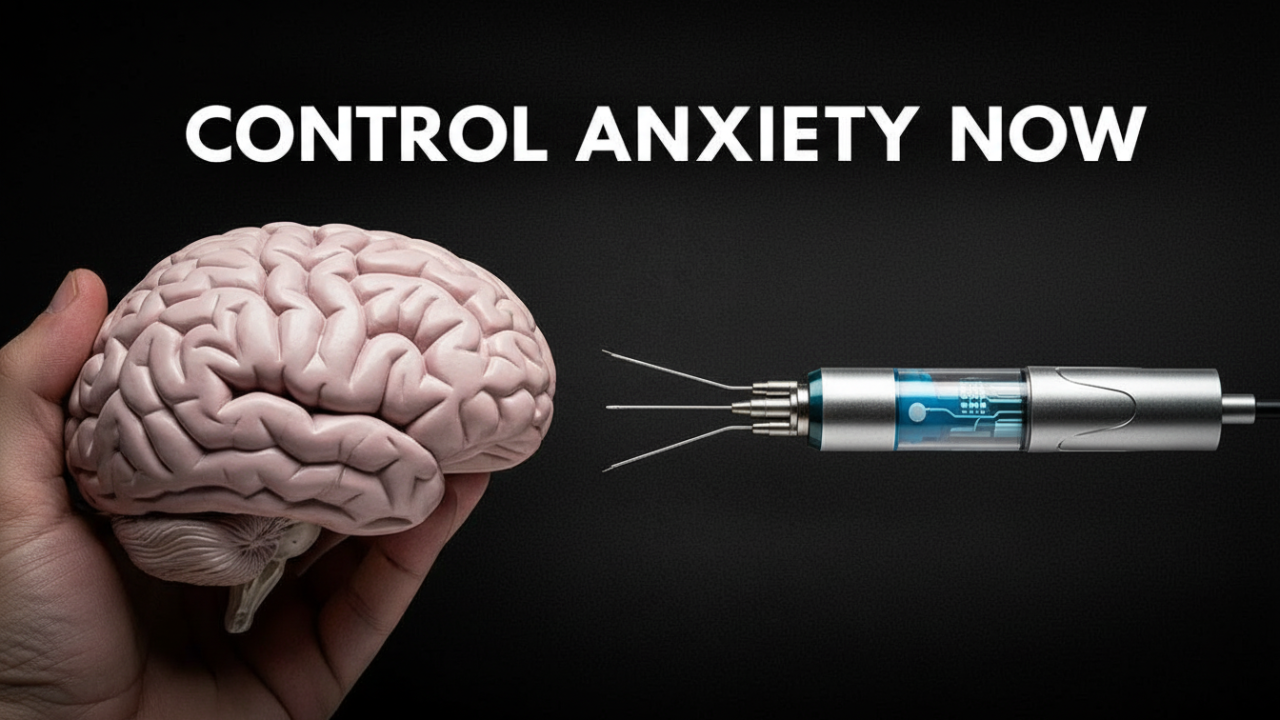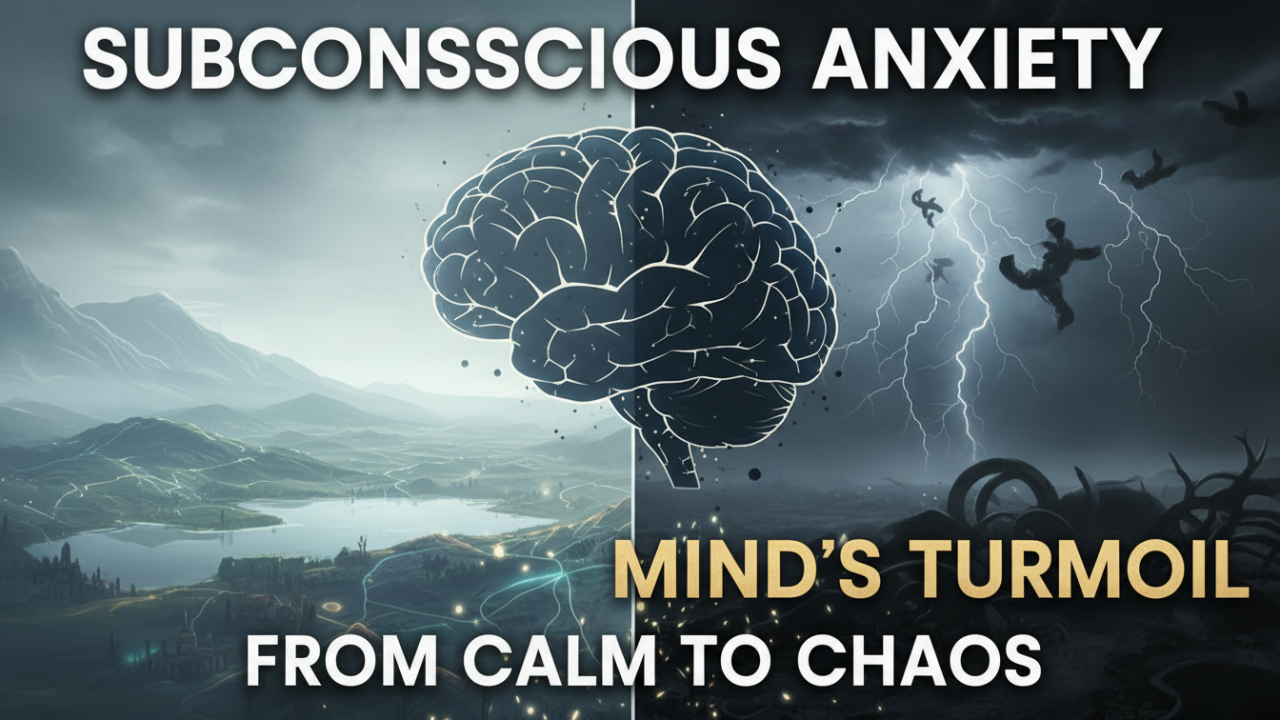Brain hacks start here. Have you ever been driving home from work, pulled into your driveway, and then suddenly realized you don’t remember the last ten minutes of the journey? It’s an unsettling feeling, right? Your body was on autopilot—steering, braking, signaling—all while your mind was completely somewhere else. Or how about this: a flicker of boredom hits you, and before you’ve even consciously registered the feeling, your hand is already reaching for your phone, your thumb hovering over that social media app you *promised* yourself you’d use less.
These aren’t glitches in your system. They’re not signs of a weak will. They are proof of a perfectly functioning, highly efficient machine operating deep inside your brain. This system has one primary goal: to save energy. Your brain is a master of efficiency, and it gets there by turning your conscious choices into unconscious, automatic behaviors. It literally builds hidden highways of neural circuitry that let you operate on autopilot.
This process is so powerful that it governs a huge portion of our daily lives. The way you brush your teeth, the snacks you grab from the fridge, your knee-jerk reaction to stress—these are all programs running in the background. For a long time, this machinery has operated just beyond our awareness, making us feel like passengers in our own lives, pushed around by impulses we don’t fully understand.
But what if you could step into the control room and see the wiring for yourself? That’s exactly what we’re going to do. We’re going to explore the neuroscience of how your brain creates, maintains, and executes these automatic behaviors. And this isn’t just a cool biology lesson. This is about giving you a new level of self-awareness. Once you understand the hidden machinery—the neural pathways that turn a single choice into an unbreakable habit—you’re no longer a passenger. You become the architect. You gain the power to consciously design the automatic behaviors that will build the life you actually want.

Section 1: The Brain’s Great Internal Conflict: The CEO and the Factory Floor
To understand how a habit is born, you first need to get the fundamental tension inside your brain—a constant negotiation between two very different parts. Think of it like a company: you’ve got a high-level executive and a seasoned manager running the factory floor.
The executive, the CEO of your brain, is the **Prefrontal Cortex**, or PFC. It’s the newest part of your brain, sitting right behind your forehead, and it handles all the “higher-order” thinking. It’s your hub for conscious decisions, long-term planning, goal-setting, and willpower. When you’re learning something new—playing the guitar, speaking a language, figuring out new software—your PFC is on fire. It’s analyzing, correcting, and focusing. It’s consciously steering the ship. But all this deliberate effort comes at a huge metabolic cost. The PFC is an energy glutton. If you had to rely on it for every single thing you do all day, you’d be totally exhausted by 9 AM.
So, your brain, the master energy-saver, has a solution: the factory floor manager. This is the **Basal Ganglia**. Tucked deep in the ancient, primal part of your brain, the basal ganglia is a cluster of nuclei that handles procedural learning, motor control, and, most importantly, habit formation. Think of the basal ganglia as your brain’s automation department. Its job is to watch the conscious actions directed by the PFC and ask one simple question: “Have we done this before?”
When you do something for the first time, your PFC is in charge. But if you repeat that action, in the same context, over and over again, the basal ganglia starts to notice. It sees a pattern: a certain trigger leads to a certain action, which leads to a certain result. To save energy, it starts to encode this pattern, building a neural shortcut. This process is called “chunking.” The basal ganglia takes a complex string of behaviors and collapses it into one smooth, automatic routine—a chunk.
As you repeat the behavior, this neural pathway gets stronger and more defined. The connections between the neurons involved get faster. It’s like forging a trail in a forest. At first, it’s slow going. But with each trip, the path gets clearer, wider, and easier to walk. Eventually, it becomes a well-worn road—the default route.
And this is the critical handoff. As a behavior becomes a habit, brain imaging shows a fascinating shift. The conscious, effortful work in the prefrontal cortex goes quiet. It has successfully outsourced the job. The basal ganglia takes over, running the behavior on autopilot. This is why you can drive home and not remember it; your PFC was free to think about your grocery list while your basal ganglia expertly handled the chunked routine called “driving home.”
This system is a marvel of efficiency. It frees up our conscious mind to focus on new challenges and creative problems. But this exact same efficiency is what makes bad habits so incredibly powerful. Your brain doesn’t care if a habit is “good” or “bad”; it only cares if a routine has been repeated and rewarded. That mindless Instagram scroll? That automatic cigarette when you feel stressed? That nightly bowl of ice cream? Those aren’t failures of character. They are simply well-worn neural pathways in your basal ganglia, executing their programs with breathtaking efficiency, often before your conscious PFC even has a chance to say no. Understanding this internal tug-of-war is the first step to taking back control. You have to know who’s in charge before you can stage a coup.
Section 2: The Secret Formula: Deconstructing the Habit Loop
So, how does the basal ganglia decide which behaviors to automate? It’s not random. It follows a simple, powerful neurological pattern that scientists call the **Habit Loop**. This three-step process is the invisible architecture behind almost every single habit you have. It consists of a Cue, a Routine, and a Reward. Understanding this is like being handed the schematic to your own mind.
Part A: The Cue – The Starting Pistol
Every habit starts with a cue. The cue is the trigger that tells your brain to launch a specific habit. It’s the starting pistol. Cues are the context your brain learns to associate with a routine, and they usually fall into one of five categories.
1.Time:** Your brain is a great timekeeper. The 3:00 PM slump that sends you for coffee. The alarm clock that triggers checking your phone. These habits are anchored not to a choice, but to the clock.
2.Location:** Your environment is filled with cues. Walking into the kitchen might trigger opening the fridge. Sitting in *your* spot on the couch might trigger turning on the TV. This is why it can be so hard to maintain routines in a hotel—the familiar cues are all gone.
3.A Preceding Action:** Habits are often chained together. The end of one routine cues the start of the next. Finishing dinner might be the cue for dessert. Putting on your running shoes cues your pre-run stretches.
4.Your Emotional State:** This is the big one, and often the most sneaky. Feeling stressed is a massive cue for smoking, overeating, or nail-biting. Feeling bored powers countless hours of social media scrolling. Because these cues are internal, they can be the hardest to spot and control.
5.Other People:** The people we’re with can be powerful cues. You might only smoke when you’re out with certain friends or complain only when you’re talking to a specific family member.
The cue’s job is to signal which chunked routine to run. When your basal ganglia spots a familiar cue, it knows exactly which program to open, and it does it automatically, without bothering the CEO. This is why you can find yourself halfway through a bag of chips without ever consciously deciding to eat them. The cue—maybe sitting down to watch a movie—triggered the routine all on its own.
Part B: The Routine – The Cached Program
The second step is the **Routine**. This is the behavior itself—the thing you actually do. It can be physical (lacing up your shoes), cognitive (a pattern of worry), or emotional (a flash of anger in traffic).
When a habit is new, the routine requires conscious effort from the prefrontal cortex. But once it’s ingrained in the basal ganglia, the routine becomes a “cached” program—a pre-loaded, efficient script. The neural pathways are so strong that the behavior can unfold with almost zero conscious oversight.
This is where “chunking” is so brilliant. Your brain doesn’t store every tiny step. It bundles the whole sequence into one unit. Think about backing your car out of the driveway. When you were learning, you thought: “Check mirrors, turn head, foot on brake, shift to reverse…” Now, it’s just one fluid action: “back out.” The whole sequence has been chunked.
This automation is what makes habits so efficient. But it’s also what makes them feel so rigid. You’re not fighting a single decision; you’re fighting a deeply encoded, lightning-fast script. Trying to stop a habit mid-routine requires a massive jolt of willpower from your PFC to grab the steering wheel back from the autopilot. This is why the most effective place to intervene isn’t in the middle of the routine, but by managing the cue or redesigning the final, crucial step.
Part C: The Reward – The Reinforcement Signal
The final and most important part of the loop is the **Reward**. This is what tells your brain, “Hey, this whole loop? Let’s remember it for later.” It’s what reinforces the connection between the cue and the routine. And the chemical that powers this reinforcement is one of the brain’s most famous neurotransmitters: **dopamine**.
Now, there’s a huge misconception about dopamine. It’s not just the “pleasure molecule.” In the habit loop, its primary role is as a “teaching molecule.” When your routine results in a reward—the delicious taste of a cookie, the relief from stress after a cigarette—your brain gets a spike of dopamine. This dopamine surge doesn’t just feel good; it sends a powerful message back to the basal ganglia that says: “Pay attention! Whatever we just did led to a great outcome. Let’s do it again next time we see that cue.”
This dopamine-driven feedback is what stamps the pattern deeper into your brain, making it more automatic.
But here’s where it gets really interesting. Your brain is a prediction machine. Over time, as a habit gets stronger, the biggest dopamine spike doesn’t come from the reward itself. It comes in *anticipation* of the reward, right after the cue appears. This is the neurochemical root of craving. You see the cue (your phone), and your brain releases dopamine not because you’ve gotten the reward yet, but because it *predicts* the reward (interesting notifications) is coming. This creates the feeling of wanting, the urge that powerfully motivates you to perform the routine.
This system gets hijacked by modern life. Junk food, social media, and gambling are all “supernormal stimuli.” They provide a much bigger, faster dopamine hit than the natural rewards our brains evolved for. This massive, unnatural reward signal tells your brain that this habit is *extremely* important, forging powerful, often destructive, loops that can feel impossible to break. The reward, powered by dopamine, closes the loop and ensures the entire cycle will be ready to fire again, even faster and stronger, the next time.
Section 3: Becoming the Architect: How to Build Good Habits
Understanding the machine is one thing; learning to operate it is everything. The beauty of knowing the neuroscience is that it gives you a clear, evidence-based playbook for change. You can stop relying on fuzzy concepts like “willpower”—a fickle resource from your energy-hungry PFC—and start working *with* your brain’s natural systems. You can consciously design a habit loop and then let your basal ganglia’s automation engine do the heavy lifting for you.
The key insight from all this research is often called the **Golden Rule of Habit Change**: You can’t truly eliminate a bad habit, but you can *replace* it. The old neural pathways don’t just vanish. They’re incredibly persistent, which is why an old habit can pop up again years later when you’re stressed. Trying to stop a routine with brute force is often a losing battle.
The most effective strategy is to keep the old cue and the old reward, but to consciously slot in a new routine. You’re not fighting the old loop; you’re hijacking it. You’re giving the brain the same trigger it expects and delivering the reward it craves, but you’re changing the path it takes to get there. Here’s the step-by-step process for becoming the architect of your habits.
Step 1: Deconstruct Your Loop – Become a Detective
First, you need awareness. Most of our bad habits run so automatically that we’re not even sure what triggers them. To change a habit, you have to become a scientist of your own behavior. For a few days, whenever you catch yourself in a habit you want to change, grab a notebook and diagnose the loop.
Identify the Routine:** This is the easy part. What’s the behavior? (e.g., “Mindlessly eating junk food in the afternoon.”)
Isolate the Cue:** This takes detective work. When the urge strikes, ask yourself: What time is it? Where am I? What did I just finish doing? How am I feeling? Who am I with? A pattern will emerge. You might realize the cue for junk food isn’t hunger, but boredom setting in around 3:30 PM at your desk.
Experiment with Rewards:** This is crucial. What craving is the routine *really* satisfying? It’s often not what it seems. To figure this out, you have to experiment. The next time the cue hits, instead of your usual routine, try a different one. Instead of chips, take a brisk five-minute walk. Or chat with a coworker. Or eat an apple. After each one, ask yourself: is the urge gone? If you went for a walk and the craving vanished, you’ve learned something profound. The reward you were seeking wasn’t the food; it was the distraction.
Step 2: Redesign the Routine – The “If-Then” Plan
Once you’ve deconstructed the old loop, you can design a new one. The best way to do this is with a scientifically-proven technique called an **Implementation Intention**. It’s just a fancy name for a simple “If-Then” plan you create for your brain: “**If** [CUE], **then** I will [NEW ROUTINE].”
This simple plan is incredibly powerful because you’re not waiting for inspiration to strike. You’re giving your brain a clear, pre-loaded command to execute the moment a specific cue appears. It removes the need for in-the-moment willpower.
For our example, your plan might be: “**If** it’s 3:30 PM and I feel bored at my desk, **then** I will get up and walk to the water cooler and back.”
Write it down. Say it out loud. You are literally beginning to lay the tracks for a new neural pathway.
Step 3: Repetition, Environment, and Stacking
A plan is just a plan without execution. You have to repeat the new loop. Over and over. This is non-negotiable. Every time you successfully perform your new routine in response to the cue, you strengthen its neural pathway. One famous study found it took anywhere from 18 to 254 days to form a new habit, with an average around 66 days. But the truth is, there’s no magic number. It’s different for every person and every habit. The key is consistency, not perfection. If you miss a day, just get back on track the next time.
To make this easier, become an architect of your environment. This is called **Stimulus Control**. Make good habits easier and bad habits harder.
* Want to read more? Leave a book on your pillow.
* Want to go to the gym in the morning? Lay out your clothes the night before.
* Want to stop eating junk food? Get it out of your house.
You’re making the right choice the easy choice.
You can also use **Habit Stacking**. Anchor your new habit to one that’s already solid. The formula is: “**After** I [CURRENT HABIT], I will [NEW HABIT].”
* “After I brush my teeth, I will meditate for one minute.”
* “After I pour my morning coffee, I will think of one thing I’m grateful for.”
* “After I take off my work shoes, I will change into my gym clothes.”
This works because you’re tacking a new behavior onto the end of an already-automatic routine.
Step 4: Reinforce the Reward
Finally, make sure the new routine delivers a real reward. Your brain needs that dopamine feedback to lock in the new loop. Sometimes the reward is built-in—the calm after meditation, the energy after a walk. But especially at the beginning, you might need to add a little something extra.
Celebrate your wins. When you complete your new routine, give yourself a moment of genuine self-praise. A simple “Nice job” can work wonders. The key is that the reward must be immediate. The brain forges the strongest bonds between behaviors and rewards that happen closely together in time. By consciously planning your cues, redesigning your routines, and ensuring a reward, you are taking direct control of the habit-formation process. You’re no longer at the mercy of programs written by accident; you are deliberately writing the code for the person you want to become.
If looking at your brain’s machinery in this new way gave you a fresh perspective on your own habits, you can reinforce that by clicking the like button. It does more than show us some love—it tells the algorithm that this kind of knowledge is worth spreading. And to make sure you don’t miss our next exploration into the science of the mind, hit subscribe and turn on notifications.
Conclusion
We’ve journeyed into the hidden architecture of the mind, from the deliberate CEO in the prefrontal cortex to the automated factory floor of the basal ganglia. We’ve seen how this incredible system, designed for efficiency, expertly turns our choices into effortless habits using a simple formula: a Cue, a Routine, and a dopamine-driven Reward.
But the most important takeaway is this: your habits, especially the ones you hate, are not a reflection of your character. They are simply learned scripts embedded in your neurology—scripts written by repetition, often without your permission. That feeling of being on autopilot, of acting against your own best interests, is a real neurobiological phenomenon.
But understanding the mechanism is the key to your freedom. Knowing about the habit loop turns you from a passive observer into an active architect. Realizing that habits aren’t erased but *replaced* gives you a concrete strategy. By identifying your cues, managing your routines, and rewarding your progress, you can harness the power of dopamine to work *for* you, not against you.
You have the most adaptable machine in the known universe between your ears. It has the capacity to change and rewire itself based on your actions—a process called neuroplasticity. The pathways in your brain aren’t set in stone. They’re like trails in a forest. Some are wide, well-worn roads from years of traffic, but you always have the power to start blazing a new trail. With every conscious choice to follow that new path, you wear it a little deeper, until it becomes the new default, the new effortless route. You are not your brain’s passenger. You are its pilot. And you’ve just been handed the manual.






